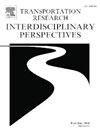整合减速指数(SRI)和AADT优化道路网络机动性:以泰国国家高速公路为例
IF 3.9
Q2 TRANSPORTATION
Transportation Research Interdisciplinary Perspectives
Pub Date : 2025-05-01
DOI:10.1016/j.trip.2025.101452
引用次数: 0
摘要
道路网络移动性能的有效评估是全球公路部门关注的问题,对经济生产力和交通可持续性具有重要意义。本研究侧重于交通拥堵指数(TCI)的评估,特别关注减速指数(SRI),因为它可以直接解释交通拥堵的严重程度。SRI对于大规模评估是有效的,例如在国家或地区级别。为了评估移动性能,我们使用了从“TomTom”获得的平均道路速度数据,该数据细致地捕捉了小路段内的全国行驶速度(每段约100至500米)。对于公路部门来说,为了改善道路而努力争取有限的年度预算,对路段和干预区域进行优先排序是一项重大挑战。为了解决这个问题,我们的研究提出了一种新的方法:整合SRI和年平均每日交通量(AADT)数据。通过将严重程度(SRI解释)与对道路使用者的影响程度(AADT解释)相结合,可以更全面地评估道路网络的流动性。为了证明该方法的实用性,我们将其应用于泰国国家高速公路,重点关注最高的道路层次(道路层次1和2),并测试了使用可能导致道路网络移动性能变化的因素的基本原理,如城市密度、海拔、车道数、延迟和速度限制。研究结果全面概述了国家一级急需改善的道路状况。本文章由计算机程序翻译,如有差异,请以英文原文为准。
Integrating speed reduction index (SRI) and AADT for prioritizing road network mobility improvements: A case study on Thailand’s national highway
Efficient evaluation of road network mobility performance is a concern for highway departments worldwide, with critical implications for economic productivity and transportation sustainability.
This study focuses on the evaluation of traffic congestion indices (TCI), with particular attention to the Speed Reduction Index (SRI), due to its straightforward interpretation of congestion severity. SRI is efficient for large-scale assessments, such as at the country or regional level. To assess mobility performance, we utilize an average road speed data obtained from “TomTom,” which meticulously captures nationwide driving speeds within small road sections (approximately 100 to 500 m per section).
For highway departments grappling with limited annual budgets for road improvements, prioritizing road sections and areas for intervention presents a significant challenge. To address this, our study proposes a novel approach: the integration of SRI and Annual Average Daily Traffic (AADT) data. By combining the severity level (SRI interpretation) with the impact level on road users (AADT interpretation), a more informed and assessment of road network mobility emerges.
To demonstrate the practicality of this methodology, we applied it to the Thai national highway, focusing on the highest road hierarchy (Road Hierarchies 1 and 2) and tested the rationale of use with factors that may cause a variation in road network mobility performance, such as urban density, elevation, lane count, delay, and speed limit. The results offer a comprehensive overview of roads in need of urgent improvement at the national level.
求助全文
通过发布文献求助,成功后即可免费获取论文全文。
去求助
来源期刊

Transportation Research Interdisciplinary Perspectives
Engineering-Automotive Engineering
CiteScore
12.90
自引率
0.00%
发文量
185
审稿时长
22 weeks
 求助内容:
求助内容: 应助结果提醒方式:
应助结果提醒方式:


